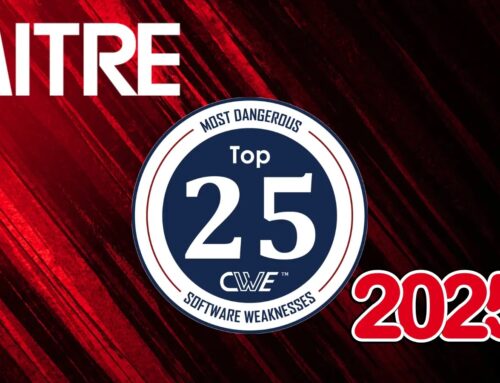
Strengthening Security Measures In Digital Advertising Platforms
The digital advertising ecosystem, a vibrant and essential component of the modern internet, faces an increasingly sophisticated threat landscape. At its core, this industry relies on the secure handling of vast quantities of user data, from browsing habits to demographic information. When breaches occur within these platforms, the consequences ripple outward, jeopardizing not only user privacy but also the foundational trust that underpins the entire digital economy. Robust security measures are not merely an option; they are an imperative for safeguarding sensitive information and maintaining user confidence.
The Looming Threat: Data Breaches in Digital Advertising
Digital advertising platforms, including display ad servers, are prime targets for cyber attackers due to the sheer volume and sensitivity of the data they process. A successful breach can expose personally identifiable information (PII), financial details, and behavioral profiles, leading to severe financial penalties, reputational damage, and a profound erosion of user trust. The challenge lies in the decentralized nature of the ad delivery chain, where data often passes through multiple intermediaries, each presenting a potential point of vulnerability. For instance, vulnerabilities like CVE-2023-34033 (a server-side request forgery vulnerability in certain ad delivery systems) highlight how critical infrastructure components can be exploited if not adequately secured.
Pillars of Security: Essential Measures for Ad Platforms
To fortify digital advertising platforms against relentless cyber threats, a multi-faceted approach to security is indispensable. This strategy must encompass technical safeguards, operational transparency, and continuous vigilance.
- Robust Encryption Protocols: Data encryption, both in transit and at rest, forms the bedrock of data security. Implementing strong cryptographic algorithms for all sensitive user data, campaign specifics, and financial transactions is non-negotiable. This protects information from unauthorized access even if a system is compromised.
- Access Control and Authentication: Strict access controls, based on the principle of least privilege, must be enforced across all platform components. Multi-factor authentication (MFA) should be mandatory for all administrative and user logins, significantly reducing the risk of unauthorized account access.
- Transparent Data Handling Practices: Ad platforms must be explicit about what data is collected, how it is used, and with whom it is shared. Clear privacy policies that are easily accessible and understandable empower users to make informed decisions about their data, fostering trust. Compliance with regulations like GDPR and CCPA is not just a legal requirement but a fundamental security practice.
- Regular Security Audits and Penetration Testing: Proactive identification of vulnerabilities is crucial. Regular, independent security audits and penetration tests simulate real-world attacks to uncover weaknesses before malicious actors can exploit them. This includes code reviews and infrastructure assessments.
- Secure Software Development Lifecycle (SSDLC): Embedding security into every stage of the software development process—from design to deployment—is paramount. This includes secure coding practices, regular vulnerability scanning of codebases, and dependency management to mitigate risks from third-party libraries.
- Incident Response Plan: A well-defined and frequently tested incident response plan is essential. This plan dictates the steps to be taken in the event of a security breach, minimizing damage, facilitating rapid recovery, and ensuring timely communication with affected parties.
- Vendor and Supply Chain Security: The interconnected nature of the ad tech ecosystem means that the security of third-party vendors (e.g., SSPs, DSPs, DMPs) is as important as an organization’s own. Due diligence, stringent contractual security clauses, and continuous monitoring of vendor security posture are vital.
Remediation Actions and Proactive Defense
Building a resilient digital advertising platform requires continuous improvement and rapid response to identified threats. Proactive remediation is key.
- Vulnerability Management Program: Establish a mature vulnerability management program that includes continuous scanning, prioritization based on risk (e.g., CVSS scores), and a clear remediation workflow. Timely patching of known vulnerabilities, such as those that allowed exploitation of CVE-2022-22965 (Spring4Shell) in various web applications, is critical.
- Security Information and Event Management (SIEM): Implement SIEM solutions to aggregate and analyze security logs from all relevant systems. This enables real-time threat detection, anomalous activity identification, and faster incident response.
- Employee Security Training: Human error remains a significant vulnerability. Regular and comprehensive security awareness training for all employees, especially those handling sensitive data or administering systems, is indispensable to combat phishing, social engineering, and other common attack vectors.
- Data Minimization and Anonymization: Collect only the data that is strictly necessary for operational purposes. Where possible, anonymize or pseudonymize data to reduce the risk associated with its compromise.
Tools for Enhanced Security Posture
Leveraging the right tools is instrumental in establishing and maintaining a strong security posture in digital advertising platforms.
| Tool Name | Purpose | Link |
|---|---|---|
| OWASP ZAP | Web application security testing, vulnerability scanning | https://www.zaproxy.org/ |
| Nessus | Vulnerability assessment and scanning | https://www.tenable.com/products/nessus |
| Burp Suite | Web security testing, penetration testing proxy | https://portswigger.net/burp |
| OpenSSL | SSL/TLS encryption, certificate management | https://www.openssl.org/ |
| Splunk (or ELK Stack) | SIEM, log management, security analytics | https://www.splunk.com/ |
Conclusion
The integrity of digital advertising platforms hinges on their ability to protect sensitive data. As the digital landscape evolves, so too do the methods of attackers. Adopting a proactive, comprehensive security strategy, rooted in transparent practices, robust encryption, and continuous auditing, is not merely a technical exercise but a strategic imperative. Prioritizing these measures builds resilience, safeguards user data, and ultimately sustains the trust essential for the continued growth and success of the digital advertising industry.





